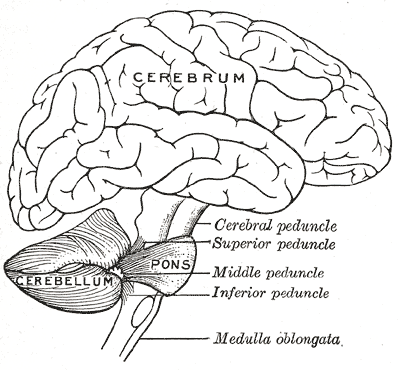
For full article, see Members' Section, with references and quotations.
The cerebellum, in its Latin root means “little brain,” and is the diminutive of cerebrum, which etymologically not only refers to the brain, but to the understanding. Of especial interest, given the allegorical significance of horns in Gurdjieff’s first series, if we look back further than the Latin, the Proto-Indo-European root is “ker,” meaning horn, and head.
The cerebellum has definite anatomical and neurophysiological connotations in contemporary human physiology and medicine. To what extent Gurdjieff’s usage of the same word “cerebellum” corresponds to this ordinary scientific usage, or to the science of his day, is an open question. On the one hand, there is the ever present possibility of any and every piece of Gurdjieff’s writing and oral material carrying a significant proportion of allegorical meaning. On the other hand, although Gurdjieff may often be taken literally as well as allegorically, the extent and quality of his knowledge may be vastly different to that of his or our contemporary science. This should be borne in mind in this and subsequent articles when the term “cerebellum” is used, not to mention other terms.
Gurdjieff’s own writing on this subject will be looked at in a further post, but it may be worth noting first some of what his pupils relate to us about the cerebellum or its equivalent, which they seem to have received from Gurdjieff, at least in part. Orage mentions the cerebellum periodically, mostly as recorded by Charles Daly King in The Oragean Version [1] and by other of Orage’s pupils. Orage also uses the designation “Centre #4” and “back of the head” to refer to the same thing, both in The Oragean Version and Orage meeting notes by various of his students [2].


